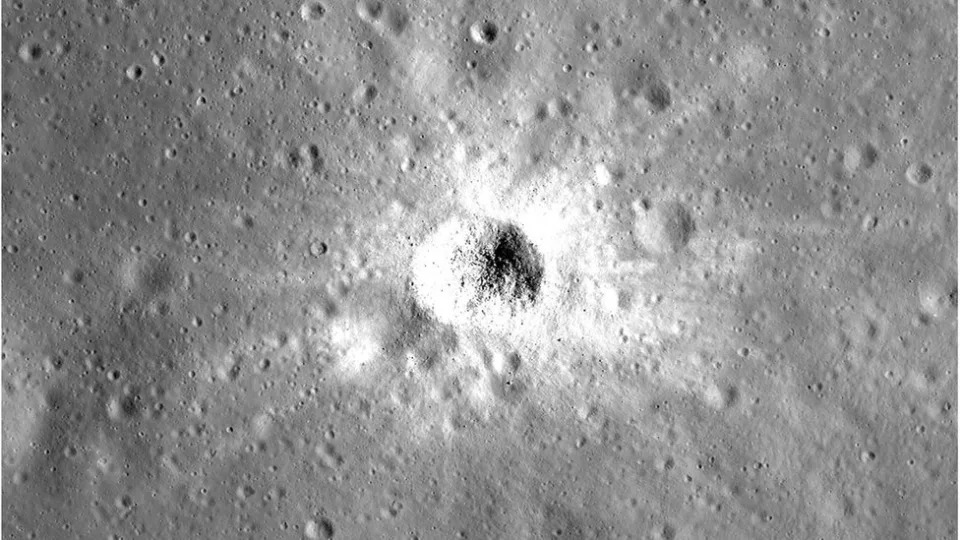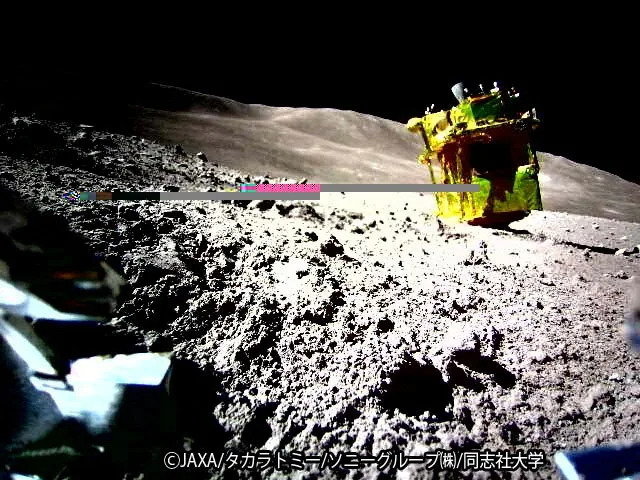Japan's SLIM probe regains power more than a week after moon landing

Japan's SLIM spacecraft has regained power, its space agency said on Monday, more than a week after it achieved an unconventionally precise lunar landing but ran out of electricity because its solar panels were at the wrong angle.
Image of the Smart Lander for Investigating Moon (SLIM) taken by LEV-2 on the moon.
The Japan Aerospace Exploration Agency (JAXA) re-established communication with its Smart Lander for Investigating Moon (SLIM) late on Sunday, a JAXA spokesperson said, nearly nine days after the probe's touchdown made Japan the fifth country to put a spacecraft on the moon.
The probe was likely able to generate power thanks to a change in the sunlight's direction, JAXA said.
SLIM resumed its operations to analyse the composition of olivine rocks on the lunar surface with its multi-band spectral camera, in search of clues about the origin of the moon, the agency added.
SLIM touched down on the moon within 55 m (180 ft) of its target in a crater near the lunar equator on Jan. 20. JAXA said it proved an advancement in what it called vision-based "pinpoint" landing - a technology that could be a powerful tool for future exploration of hilly moon poles seen as a possible source of fuel, water and oxygen.
SLIM lost the thrust of one of its two main engines shortly before the touchdown for unknown reasons and ended up drifting a few dozen metres away from the target. The lander safely stopped on a gentle slope but appeared toppled with an engine facing upward in a picture taken by a baseball-sized wheeled rover it deployed.
The probe's solar panels faced westward due to the displacement and could not immediately generate power. JAXA manually unplugged SLIM's dying battery 2 hours and 37 minutes after the touchdown as it completed the transmission of the lander's data to the earth.
JAXA does not have a clear date when SLIM will end its operation on the moon, but the agency has previously said the lander was not designed to survive a lunar night. The next lunar night begins on Thursday.
Moon lander: Japan's Slim reactivates and gets to work
As the Japanese Space Agency put it: "Operations resumed!"
After the Japan Aerospace Exploration Agency (Jaxa) re-established contact with its Moon lander on Sunday night, the craft started to study its surroundings in detail and transmit new images to Earth.
The lander is carrying out analysis that could inform future, much longer missions to the Moon.
One lunar scientist told BBC News: "Now we're really seeing the science."
The craft is at a very awkward angle. A picture, captured by the small baseball-sized robot called Sora-Q - which was ejected from Slim moments before touchdown - showed the lander face-down on the lunar surface.
That left its solar panels facing away from the sunlight and unable to generate power. The decision was taken to put the lander into sleep mode - and conserve what power remained - less than three hours after it landed.
That tactic appears to have worked. A change in the direction of the sunlight has now "awoken" the craft.
The mission team had already been able to study images of the landing site and have picked out specific rocks in the area and given each one the name of a dog breed - apparently to give an indication of the size of each rock. On Monday, the team released a grey, rocky close-up image - this was the lander's scientific camera zooming in on a rock that has been named "toy poodle".
It might not look like a spectacular photograph, but the snapshot was taken with what is called the Multi-Band Camera or MBC, which can essentially capture images that reveal the composition of the rock.
"The camera responds differently - in different wavelengths - to each of the minerals that are in this rock," explained Open University lunar scientist Dr Simeon Barber.
Seeing that will enable scientists to build up a picture of the Moon's history. "If toy poodle is completely different to the rocks around it, that might suggest it was transported there by an impact event," explained Dr Barber. "So all this detail allows us to piece together more about what's happened on the Moon since it was formed."
Being able to pinpoint rocks and examine them in this way could also reveal substances on the lunar surface that future missions might be able to use to make fuel or provide a water supply.
"This detailed geology is the cherry on the icing on the cake," said Dr Barber. "[The mission is] already a success in my mind - I think engineering so far has been fantastic."

It is not yet clear how long the craft will be able to operate - it all hinges on the angle of the Sun and solar panels.
The Sun will eventually set on the lander and Jaxa has previously warned that it was not designed to survive a lunar night, when the surface of the Moon is not exposed to the Sun for about 14 days.
But mission engineers have already achieved their pinpoint landing target of getting within 100m (330ft) of their intended landing site.
- Questions and Answers
- Opinion
- Motivational and Inspiring Story
- Technology
- Live and Let live
- Focus
- Geopolitics
- Military-Arms/Equipment
- Segurança
- Economy/Economic
- Beasts of Nations
- Machine Tools-The “Mother Industry”
- Art
- Causes
- Crafts
- Dance
- Drinks
- Film/Movie
- Fitness
- Food
- Jogos
- Gardening
- Health
- Início
- Literature
- Music
- Networking
- Outro
- Party
- Religion
- Shopping
- Sports
- Theater
- Health and Wellness
- News
- Culture


